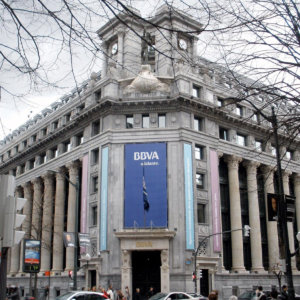Thriving in an Increasingly Digital Ecosystem
Given the amount of turmoil digital disruption is causing, it’s time for companies to evaluate the threats and opportunities — and start creating new business options for the future.
The business world is rapidly digitizing, breaking down industry barriers and creating new opportunities while destroying long-successful business models. We call this process digital disruption, and although sweeping technology-enabled change often takes longer than we expect, history shows that the impact of such change can be greater than we ever imagined. Think steam engines, cars, airplanes, TVs, telephones and, most recently, mobile phones and e-books. With e-books, the market has been slow to develop. Traditionalists said you wouldn’t be able to replace the experience of a paper book. But e-books are gaining traction — they are cheaper than paper books, faster to acquire and searchable. Although the margins on them are thinner than the margins on traditional books, the market is growing. In 2014, 28% of American adults read an e-book, up from 17% in 2011.1
Given the amount of turmoil digital disruption is causing, it’s time for companies to evaluate these threats and opportunities and start creating new business options for the future — the more-connected future of digital ecosystems. Board members at large companies agree. In recent research by the MIT Center for Information Systems Research, board members estimated that 32% of their company’s revenue would be under threat from digital disruption in the next five years; 60% of board members felt their boards should spend significantly more time on this issue next year.2 Among the disrupters board members worried about the most were Uber (disrupting taxis); Airbnb (disrupting hotels); Apple Pay, Kabbage, Venmo and others (disrupting banks); and Amazon (disrupting booksellers and retailers of many other products).
On the other hand, increasing digitization also offers opportunities. Companies can leverage strong customer relationships and increase cross-selling opportunities. This article presents a framework, supported by examples and financial performance impacts, for helping managers to think about their competitive environments in the digital era. (See “About the Research.�
References
1. K. Zickuhr and L. Rainie, “E-Reading Rises as Device Ownership Jumps,”January 16, 2014, www.pewinternet.org.
2. P. Weill and S.L. Woerner, “Working With Your Board on Digital Disruption?,” research briefing, MIT Center for Information Systems Research, Cambridge, Massachusetts, April 16, 2015.
3. W. Gibson, quoted in S. Rosenberg, “Virtual Reality Check Digital Daydreams, Cyberspace Nightmares,” San Francisco Examiner, April 19, 1992, sec. Style, p. C1.
4. M. Porter described value chains in “Competitive Strategy” (New York: Free Press, 1980). For early work on business ecosystems, see J.F. Moore, “The Death of Competition: Leadership and Strategy in the Age of Business Ecosystems” (New York: HarperBusiness, 1996); and M. Iansiti and R. Levien, “Strategy as Ecology,” Harvard Business Review 82, no. 3 (March 2004): 68-78.
5. “Property Guide App,” n.d., www.creamglobal.com.
6. J.W. Ross and C.M. Beath, “USAA: Organizing for Innovation and Superior Customer Service,” working paper 4973-11, MIT Center for Information Systems Research, Cambridge, Massachusetts, December 2010, http://papers.ssrn.com; M. Mocker and J.W. Ross, “USAA: Capturing Value from Complexity,” working paper 389, MIT Center for Information Systems Research, Cambridge, Massachusetts, March 2013; and “USAA Auto Circle,” n.d., www.usaa.com.
7. Net Promoter Score (NPS) = percentage of customers who are promoters minus the percentage of customers who are detractors. Scores range from -100 to +100. In 2014, USAA received an NPS of 81 (out of 100) compared with an industry average of 34. See “Satmetrix 2014 U.S. Consumer Study,” www.satmetrix.com.
8. This is a big issue that universities are facing with online education.
9. “USAA Auto Circle,” www.usaa.com.
10. In comments at a 1971 meeting of Xerox and the Palo Alto Research Center, as documented at http://web.archive.org/web/*/http://smalltalk.org/alankay.html.

